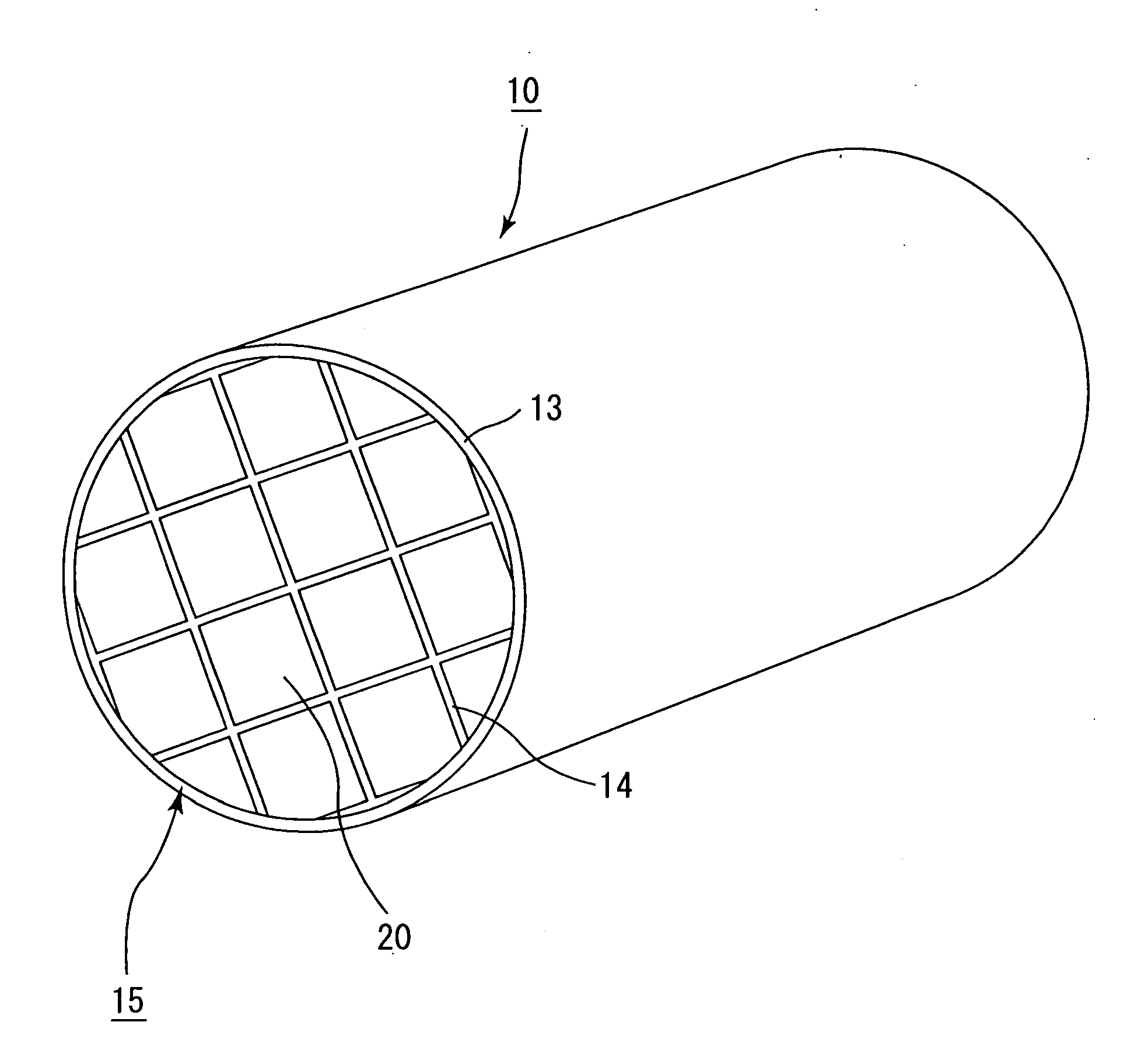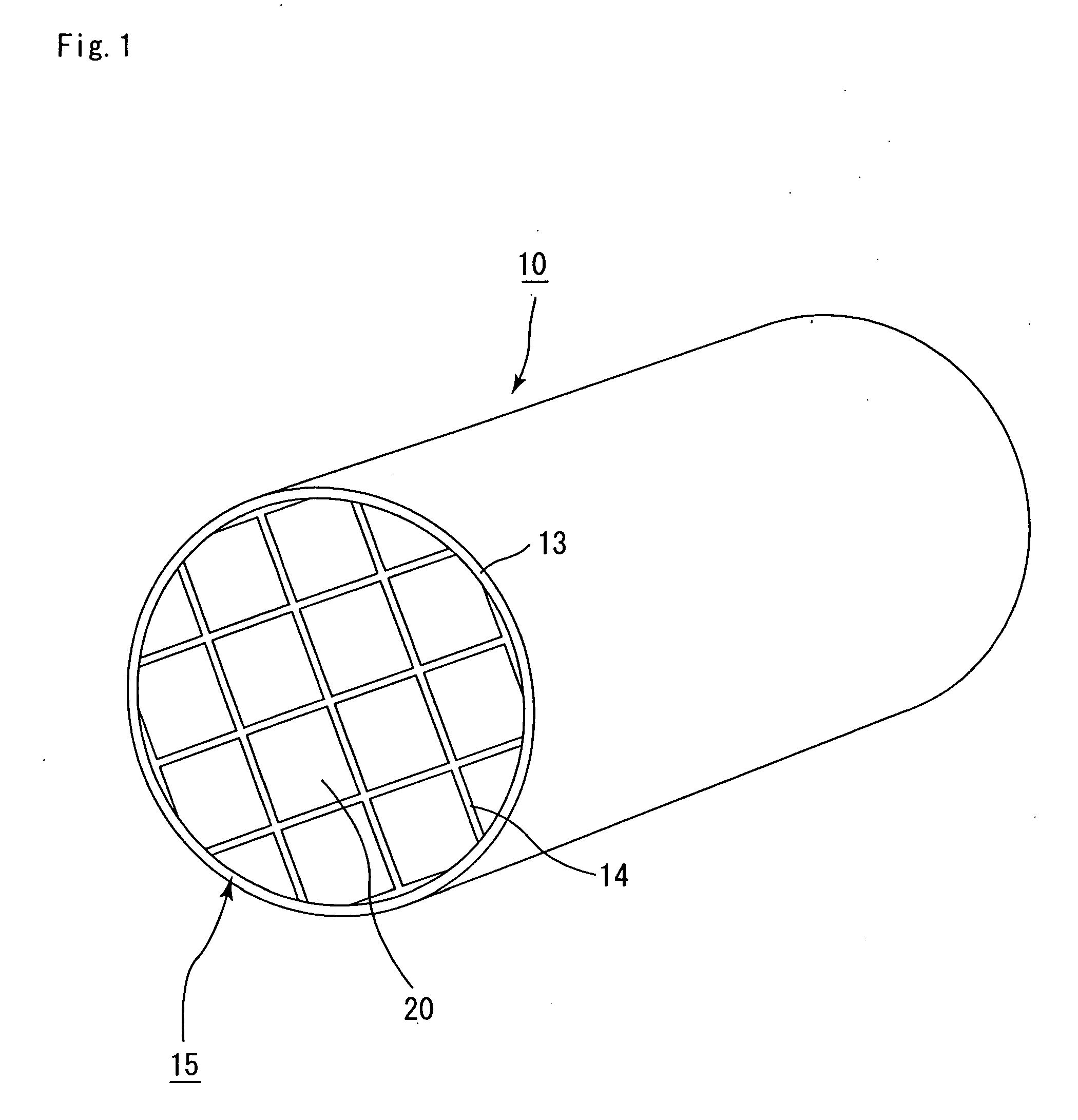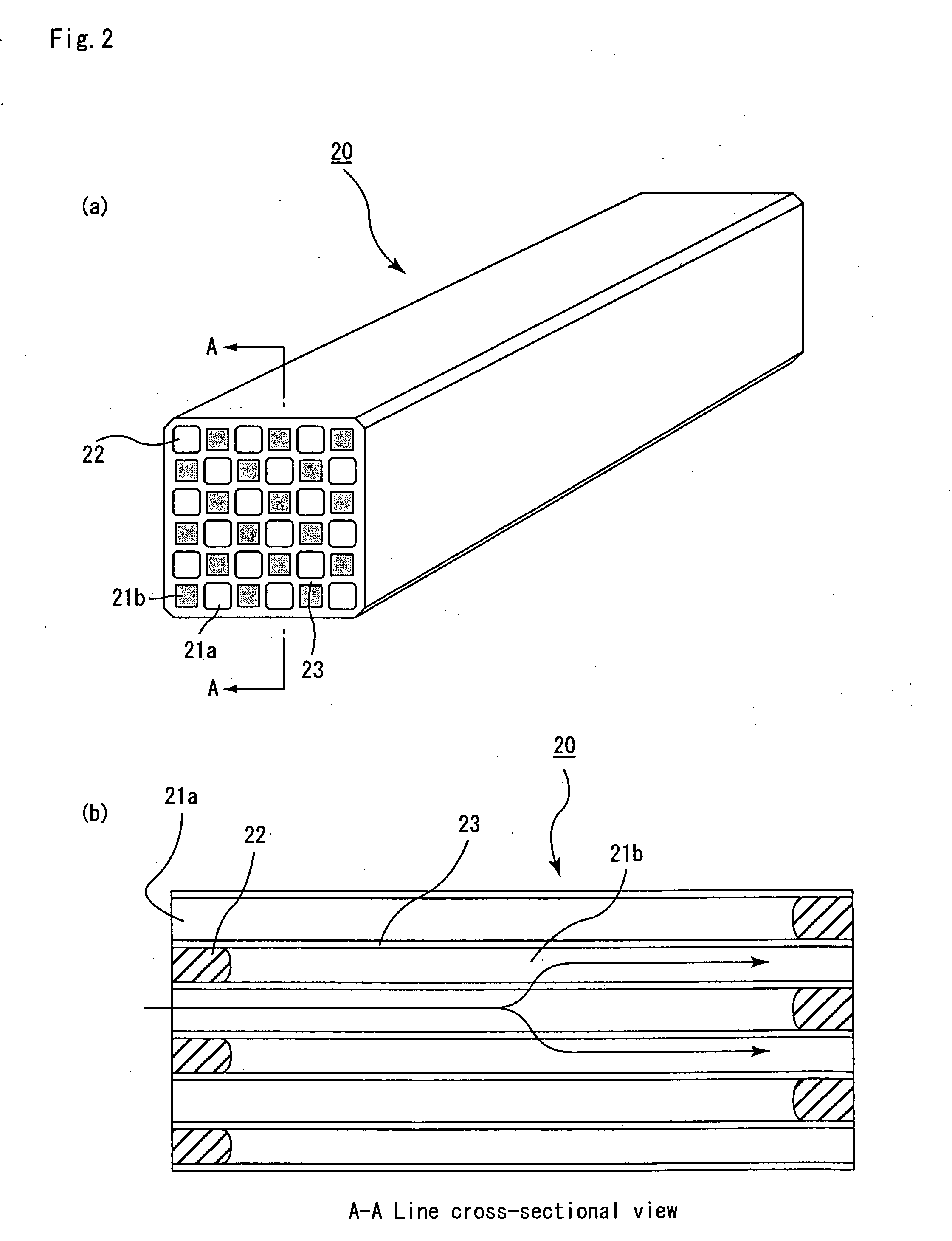Honeycomb structural body
a technology of honeycomb and structure, applied in the direction of filtration separation, physical/chemical process catalysts, separation processes, etc., can solve the problems of harmful to the environment and the human body, the resistance exerted upon passing through the wall portion barely increases, and prolongs the period up to the regenerating process. , the effect of improving the collection performance of particulates
- Summary
- Abstract
- Description
- Claims
- Application Information
AI Technical Summary
Benefits of technology
Problems solved by technology
Method used
Image
Examples
example 1
[0171] (1) Powder of α-type silicon carbide having an average particle size of 11 μm (±1 μm for the portion of 99.99% by weight thereof) (60% by weight), obtained by adjusting the grain size of a material using a sieve, and powder of β-type silicon carbide having an average particle size of 0.5 μm (40% by weight) were wet-mixed, and to 100 parts by weight of the resulting mixture were added and kneaded 5 parts by weight of an organic binder (methyl cellulose) and 10 parts by weight of water to obtain a mixed composition. Next, after a slight amount of a plasticizer and a lubricant had been added and kneaded therein, the resulting mixture was extrusion-molded so that a raw formed product, which had almost the same cross-sectional shape as the cross-sectional shape shown in FIG. 4(b) and a ratio of opening areas of 3.00, was manufactured.
[0172] (2) Next, the above-mentioned raw formed product was dried by using a microwave drier or the like to form a ceramic dried body, and after pre...
examples 2 to 12
[0179] Porous ceramic members were manufactured in the same manner as Example 1, except that the average pore diameter and the pore diameter distribution were changed to values as shown in Table 1. Here, the particle size of the material powder, firing conditions and the like are shown in Table 1. Moreover, the particle size of the material powder (α-type silicon carbide powder) was set to ±1 μm for the portion of 99.99% by weight thereof in the same manner as Example 1.
example 13
[0192] (1) The same processes as (1) of Example 1 were carried out to prepare a mixed composition. Next, after a slight amount of a plasticizer and a lubricant had been added to the mixed composition and further kneaded, the resulting mixed composition was subjected to an extrusion molding process to manufacture a raw ceramic formed body having a cross-sectional shape as shown in FIG. 9 with a ratio of opening areas of 3.00. Here, the particle size of the material powder (α-type silicon carbide powder) was set to ±1 μm for the portion of 99.99% by weight thereof in the same manner as Example 1.
[0193] (2) Next, the above-mentioned raw formed product was dried by using a microwave drier or the like to form a ceramic dried body, and after predetermined through holes had been filled with a paste having the same composition as the raw formed product, the resulting product was again dried by using a drier, and then degreased at 400° C., and fired at 2000° C. in a normal-pressure argon at...
PUM
| Property | Measurement | Unit |
|---|---|---|
| pore diameter | aaaaa | aaaaa |
| porosity | aaaaa | aaaaa |
| pore diameters | aaaaa | aaaaa |
Abstract
Description
Claims
Application Information
 Login to View More
Login to View More - R&D
- Intellectual Property
- Life Sciences
- Materials
- Tech Scout
- Unparalleled Data Quality
- Higher Quality Content
- 60% Fewer Hallucinations
Browse by: Latest US Patents, China's latest patents, Technical Efficacy Thesaurus, Application Domain, Technology Topic, Popular Technical Reports.
© 2025 PatSnap. All rights reserved.Legal|Privacy policy|Modern Slavery Act Transparency Statement|Sitemap|About US| Contact US: help@patsnap.com



